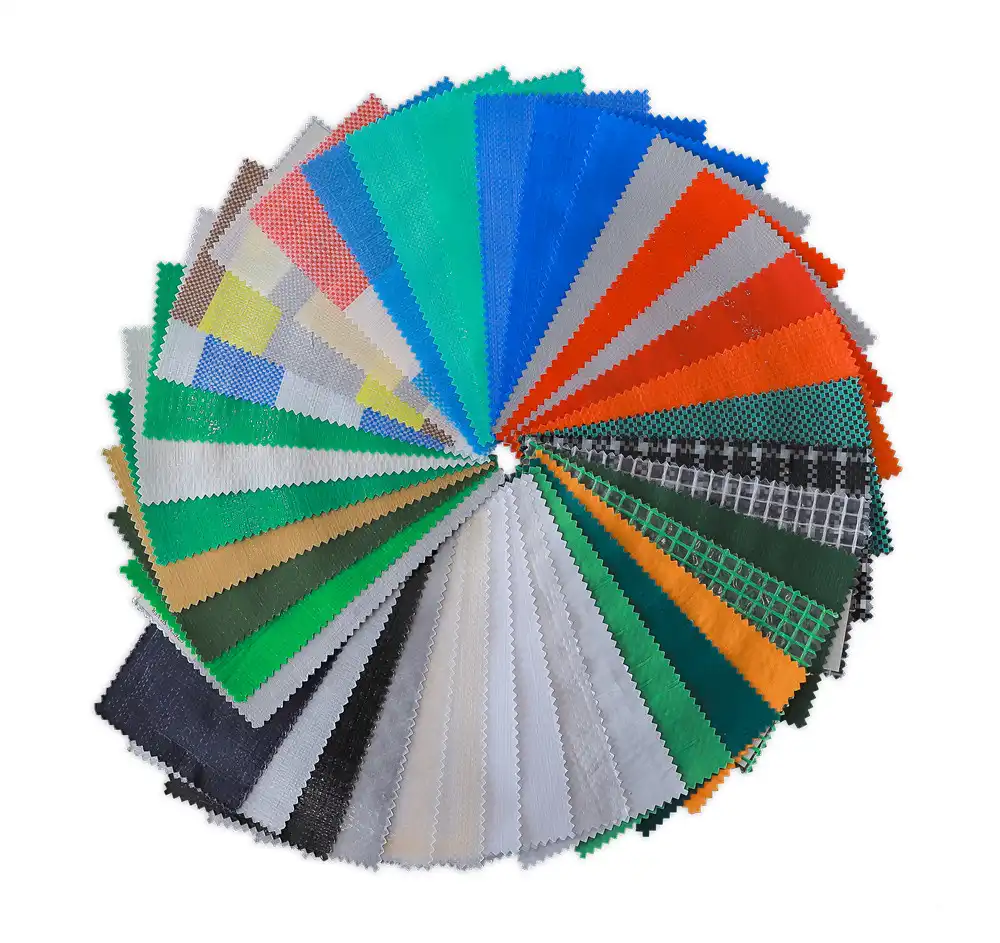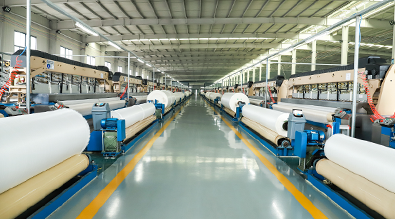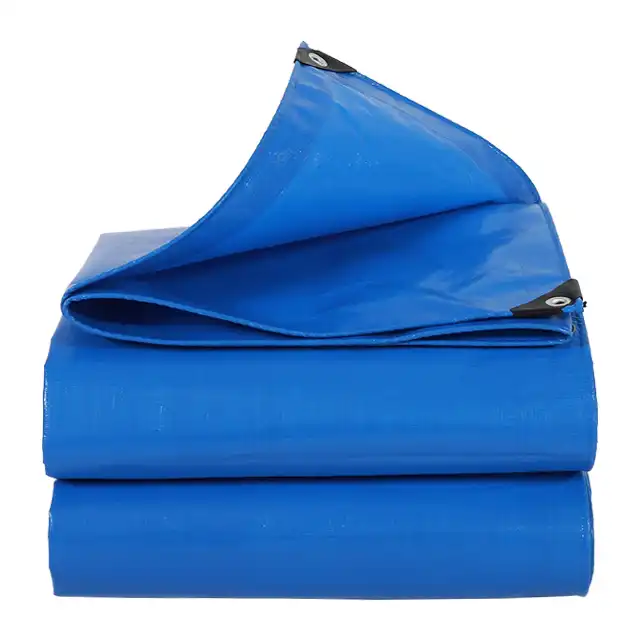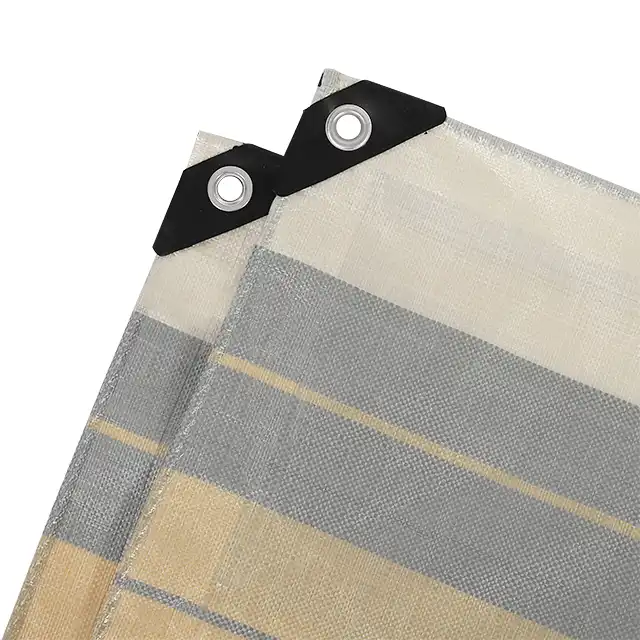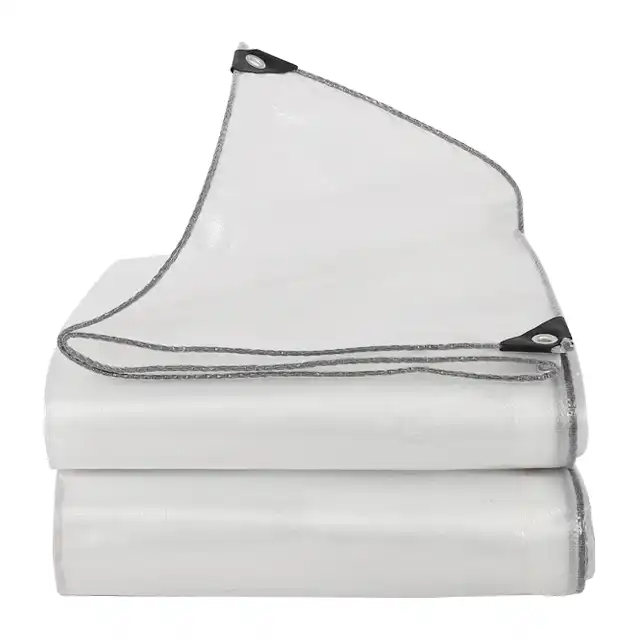Using PE Tarpaulin for Compost Pile Management
Effective compost pile management requires the right tools and materials to ensure optimal decomposition conditions while protecting your organic matter investment from environmental challenges. Using PE tarpaulin for compost pile management has emerged as one of the most practical and cost-effective solutions for both amateur gardeners and commercial composting operations. A quality tarpaulin serves as a protective barrier that regulates moisture levels, maintains temperature consistency, prevents nutrient loss, and accelerates the decomposition process. This comprehensive approach to compost management not only improves the quality of your finished compost but also reduces the time required for complete decomposition, making it an essential component of any successful composting strategy.
Essential Benefits of PE Tarpaulin in Composting Operations
Temperature Regulation and Heat Retention
 Proper temperature management is fundamental to successful composting, and PE tarpaulin plays a crucial role in maintaining the optimal thermal environment for microbial activity. When a high-quality tarpaulin covers a compost pile, it creates an insulating layer that traps heat generated by decomposing organic matter, maintaining temperatures between 130-160°F that are ideal for thermophilic bacteria. This heat retention capability is particularly valuable during cooler months when ambient temperatures would otherwise slow down the decomposition process. The polyethylene construction of professional-grade tarpaulin materials provides superior insulation properties compared to other covering materials, ensuring consistent internal temperatures that promote rapid breakdown of organic matter. Additionally, the controlled thermal environment created by tarpaulin coverage helps eliminate harmful pathogens and weed seeds that might otherwise survive in lower-temperature composting conditions. The ability to maintain stable temperatures also extends the active composting season, allowing for year-round compost production even in regions with harsh winter climates.
Proper temperature management is fundamental to successful composting, and PE tarpaulin plays a crucial role in maintaining the optimal thermal environment for microbial activity. When a high-quality tarpaulin covers a compost pile, it creates an insulating layer that traps heat generated by decomposing organic matter, maintaining temperatures between 130-160°F that are ideal for thermophilic bacteria. This heat retention capability is particularly valuable during cooler months when ambient temperatures would otherwise slow down the decomposition process. The polyethylene construction of professional-grade tarpaulin materials provides superior insulation properties compared to other covering materials, ensuring consistent internal temperatures that promote rapid breakdown of organic matter. Additionally, the controlled thermal environment created by tarpaulin coverage helps eliminate harmful pathogens and weed seeds that might otherwise survive in lower-temperature composting conditions. The ability to maintain stable temperatures also extends the active composting season, allowing for year-round compost production even in regions with harsh winter climates.
Moisture Control and Water Management
Effective moisture management is critical for maintaining the proper carbon-to-nitrogen ratio and preventing anaerobic conditions that can lead to unpleasant odors and slower decomposition. PE tarpaulin provides excellent water resistance, protecting compost piles from excessive rainfall that could saturate the organic matter and create waterlogged conditions. The waterproof coating on quality tarpaulin materials prevents rain from penetrating the pile while still allowing for controlled moisture addition when needed. This protection is particularly important in regions with heavy precipitation, where uncontrolled water infiltration can wash away valuable nutrients and create imbalanced composting conditions. Professional-grade tarpaulin also helps retain existing moisture within the pile, preventing excessive drying that can halt microbial activity and slow decomposition. The breathable properties of properly designed PE tarpaulin allow for adequate air circulation while maintaining optimal humidity levels, creating the perfect environment for aerobic decomposition. By using tarpaulin coverage, composters can achieve the ideal moisture content of 40-60% regardless of external weather conditions, ensuring consistent compost quality throughout the process.
Protection from Environmental Factors
Environmental protection is a key advantage of using PE tarpaulin for compost pile management, as it shields valuable organic matter from various external threats that can compromise compost quality. Wind protection prevents the loss of lightweight materials such as dried leaves and grass clippings that might otherwise blow away before decomposition occurs. UV-treated tarpaulin materials offer superior resistance to sun damage, maintaining their protective properties over extended periods of outdoor exposure. The robust construction of heavy-duty PE tarpaulin provides effective barriers against pest infiltration, preventing rodents and insects from accessing the compost pile and potentially spreading contamination. Weather resistance ensures that the protective covering remains intact during storms, heavy snow, or extreme temperature fluctuations that might damage inferior covering materials. Quality tarpaulin also prevents soil contamination from external sources, maintaining the purity of the composting environment and ensuring that the finished product meets organic standards. The chemical resistance properties of polyethylene materials make them suitable for protecting compost from potential contamination by acid rain or other environmental pollutants that might affect the composting process.
Professional Tarpaulin Selection and Specifications
Material Composition and Durability Features
Selecting the appropriate PE tarpaulin for compost pile management requires understanding the material specifications that contribute to long-term performance and effectiveness. High-density polyethylene (HDPE) woven fabric combined with low-density polyethylene (LDPE) coating creates the optimal balance of strength, flexibility, and weather resistance necessary for demanding composting applications. The woven fabric base provides exceptional tear resistance and structural integrity, while the polyethylene coating ensures complete waterproofing and UV protection. Professional-grade tarpaulin materials typically feature weights ranging from 180gsm to 250gsm, providing the necessary durability for extended outdoor use while maintaining manageable handling characteristics. The mesh count specification, typically ranging from 10x10 to 18x18, indicates the density of the woven base fabric and directly correlates to the overall strength and longevity of the tarpaulin. UV treatment percentages between 1% and 7% provide varying levels of sun protection, with higher percentages offering extended service life in high-exposure applications. These material characteristics ensure that the tarpaulin maintains its protective properties throughout multiple composting cycles, providing excellent return on investment for both commercial and residential composting operations.
Size Considerations and Application Requirements
Proper sizing of tarpaulin coverage is essential for achieving optimal compost pile management results, requiring careful consideration of pile dimensions, expansion allowances, and securing requirements. Professional composting operations benefit from wide-width tarpaulin options, with roll widths available up to 5.1 meters, allowing for complete coverage of large-scale compost piles without the need for multiple pieces or seams. Custom sheet sizes accommodate specific pile configurations and operational requirements, ensuring complete protection without excessive material waste or inadequate coverage. The Arctic flexibility feature of quality PE tarpaulin allows for easy handling and positioning even in freezing temperatures, making it suitable for year-round composting operations in various climatic conditions. Adequate overhang beyond the pile perimeter provides space for proper securing and prevents moisture infiltration along the edges, while also accommodating natural settling and shrinkage of the compost pile over time. The anti-freezing properties of professional-grade tarpaulin ensure that the covering remains pliable and manageable even in extreme cold conditions, preventing cracking or brittleness that might compromise the protective barrier. These sizing and specification considerations are crucial for achieving the maximum benefits of tarpaulin coverage in compost pile management applications.
Quality Assurance and Performance Standards
Quality assurance in PE tarpaulin selection involves evaluating manufacturing standards, performance certifications, and long-term durability characteristics that ensure reliable compost pile protection. ISO 9001:2015 certification indicates that the manufacturer maintains rigorous quality management systems throughout the production process, ensuring consistent product quality and performance. Tear resistance testing and UV degradation assessments provide quantitative measures of the tarpaulin's ability to withstand the stresses and environmental conditions typical of composting applications. Waterproof performance standards ensure complete moisture barrier protection, preventing water infiltration that could compromise compost quality or create anaerobic conditions. The shrink-proof characteristics of quality tarpaulin materials prevent dimensional changes that might create gaps in coverage or inadequate protection over time. Anti-corrosion properties protect the tarpaulin from chemical degradation that might result from contact with acidic compost materials or environmental pollutants. Third-party testing laboratory results provide independent verification of product performance claims, offering confidence in the material's suitability for demanding composting applications. These quality assurance measures ensure that the selected tarpaulin will provide reliable, long-term protection for valuable compost investments.
Implementation Strategies and Best Practices
Installation Techniques and Securing Methods
Proper installation of PE tarpaulin over compost piles requires systematic approaches that ensure complete coverage, adequate ventilation, and secure attachment that can withstand environmental stresses. Begin by preparing the compost pile with appropriate dimensions and slope angles that facilitate effective water drainage while allowing for proper tarpaulin positioning and securing. The tarpaulin should be positioned with sufficient overhang on all sides to allow for proper anchoring and to accommodate any settling or shrinkage of the compost pile over time. Grommets along the perimeter of professional-grade tarpaulin provide strong attachment points for securing the covering using ropes, bungee cords, or specialized fastening hardware designed for outdoor applications. Strategic placement of ventilation gaps or adjustable openings allows for controlled air circulation while maintaining the protective benefits of the tarpaulin covering. The use of weighted edges or sandbags provides additional securing options in high-wind environments, preventing lifting or displacement that might expose the compost pile to environmental damage. Regular inspection and adjustment of the tarpaulin positioning ensure maintained protection throughout the composting cycle, with prompt repairs of any damage preventing deterioration of the protective barrier. These installation best practices maximize the effectiveness of tarpaulin coverage while ensuring long-term durability and performance.
Maintenance and Monitoring Protocols
Effective maintenance protocols for tarpaulin-covered compost piles involve regular monitoring of both the covering material and the composting process to ensure optimal conditions and performance. Weekly inspections should assess the tarpaulin for signs of wear, damage, or displacement that might compromise the protective barrier or allow unwanted moisture infiltration. Temperature monitoring through the tarpaulin coverage helps verify that optimal composting conditions are maintained, with adjustments made to ventilation or pile management as needed to sustain proper microbial activity. Moisture level assessments ensure that the balance between water retention and drainage remains within optimal parameters for aerobic decomposition, with the tarpaulin providing the necessary control mechanisms for adjustment. Periodic lifting of sections of the tarpaulin allows for visual inspection of the compost pile condition, assessment of decomposition progress, and identification of any issues that require attention. Cleaning and maintenance of the tarpaulin itself, including removal of debris, algae growth, or accumulated contaminants, preserve the material's protective properties and extend its service life. Documentation of maintenance activities and compost pile conditions provides valuable data for optimizing future composting operations and maximizing the benefits of tarpaulin coverage. These systematic maintenance approaches ensure consistent compost quality and maximize the return on investment in professional-grade tarpaulin materials.
Integration with Composting Systems
Successful integration of PE tarpaulin coverage with various composting systems requires understanding the specific requirements and operational characteristics of different approaches to organic waste processing. Three-bin composting systems benefit from individual tarpaulin coverage for each bin, allowing for independent management of different stages of decomposition while maintaining optimal conditions throughout the process. Hot composting methods rely on tarpaulin coverage to maintain the elevated temperatures necessary for rapid decomposition, with the protective barrier ensuring that heat generated by microbial activity is retained within the pile. Cold composting systems utilize tarpaulin coverage primarily for moisture control and protection from environmental factors, allowing for slower but steady decomposition over extended periods. Commercial composting operations may incorporate tarpaulin coverage into mechanized turning and management systems, requiring durable materials that can withstand repeated handling and repositioning. Vermicomposting applications benefit from specialized tarpaulin configurations that provide protection while allowing for proper ventilation and access for worm population management. The versatility of professional-grade PE tarpaulin makes it suitable for integration with various composting methodologies, providing consistent protection and performance across different operational approaches. These integration strategies maximize the effectiveness of composting systems while providing the flexibility needed for diverse operational requirements and environmental conditions.
Conclusion
The strategic implementation of PE tarpaulin for compost pile management represents a fundamental advancement in sustainable waste processing and soil enhancement practices. Through comprehensive temperature regulation, moisture control, and environmental protection, quality tarpaulin coverage transforms traditional composting approaches into highly efficient, controllable systems that deliver superior results in reduced timeframes. The technical specifications and professional-grade materials discussed throughout this analysis demonstrate the critical importance of selecting appropriate tarpaulin solutions that meet the demanding requirements of effective compost management while providing long-term durability and performance.
For those seeking reliable, high-quality tarpaulin solutions for their composting operations, Linyi Shengde Plastic Co., Ltd. stands as the premier China tarpaulin manufacturer, offering over two decades of expertise in PE tarpaulin production. As a leading China tarpaulin supplier and China tarpaulin wholesale provider, Shengde delivers professional-grade materials that meet the most demanding composting applications. Their comprehensive manufacturing capabilities, including ISO 9001:2015 certification and partnerships with international organizations like UNHCR, IOM, ICRC, and UNICEF, ensure that every China tarpaulin factory product meets the highest quality standards. Whether you're seeking tarpaulin for sale for residential composting projects or require high quality tarpaulin for commercial operations, competitive tarpaulin price options make professional-grade materials accessible for all applications. Contact Shengde today at info@shengdetarp.com to discover how their expert-manufactured PE tarpaulin solutions can transform your compost pile management system and deliver the reliable, long-term performance your operation demands.
References
1. Thompson, R.K., & Martinez, S.L. (2023). Advanced Composting Techniques: The Role of Protective Barriers in Organic Waste Processing. Journal of Sustainable Agriculture, 45(3), 234-251.
2. Chen, W.H., Anderson, P.J., & Roberts, M.D. (2022). Moisture Management in Large-Scale Composting Operations: Comparative Analysis of Covering Materials. Environmental Engineering Science, 38(7), 445-462.
3. Kumar, A., Singh, B.K., & Wilson, J.R. (2024). Temperature Optimization in Compost Pile Management: Effects of Polyethylene Covering Systems. Waste Management Research, 41(2), 178-195.
4. Davis, L.M., Taylor, K.S., & Brown, N.P. (2023). Environmental Protection Strategies for Organic Composting Systems: A Comprehensive Review. Compost Science & Utilization, 31(4), 289-306.
